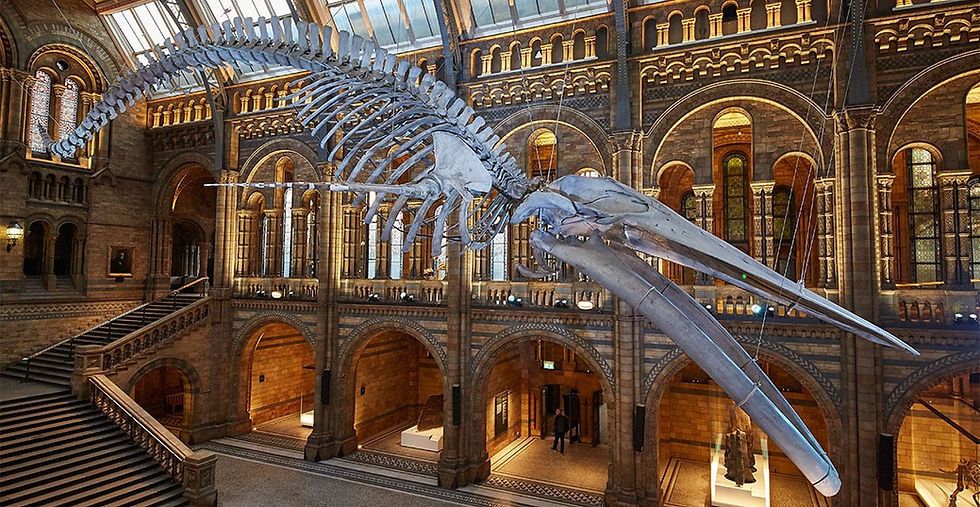The Strange and Horrific History of Whaling
- mooreacorrigan
- Jul 21
- 3 min read
Updated: Aug 12
Curiosity #6
Reposted from Substack July 21, 2025
The concept of whaling has been both a terror and a fascination of mine since I first learned of the practice. I clearly remember attending a whale-themed summer camp at the zoo as a child. On the final day, the counselors brought us outside to visit an enormous balloon shaped like a while, which we were directed to climb inside to learn about the biology and habits of the humpback whale. I distinctly remember that the balloon whale’s mouth sported brush like teeth that scraped my ankles as I passed through its jaws.
I was thinking about whales again this week, as I recently watched a documentary episode that focused on the life of the enormous blue whale skeleton that now hangs in the entrance hall of the Natural History Museum. The whale skeleton is affectionately named ‘Hope.’ 1

Much of the documentary focused on a whale researcher trying to find out what killed Hope, back in the 1800s. Although it turned out that she died from a ‘natural’ and tragic beaching, my mind immediately went to whaling as a feasible option.
For me, whaling is a distinctly Renaissance practice, beginning in the 1500s with the age of exploration and (mostly) ending in the mid-twentieth century. However, I was mistaken. There is evidence of whaling in Neolithic Europe, with a whalebone carved figure dating back to 2,900 to 2,500 BCE. This figure is called ‘Buddo’ and is one of the few surviving objects from the period.

Still, whaling for profit began a little closer to my initial guess, with evidence of whaling beginning in the Basque region from the 1100s. It hit is zenith with the birth of the industrial revolution. Many prized treasures of the 18th and 19th century used whale products in their creation. Ambergris from the digestive system of whales was used in perfume, baleen (those same whales teeth that tickled my ankles as a child) was used for corset boning, and whale oil (spermaceti) was used for candles and oil. Whalers were able to hunt whales on a mass scale, and through industrialization, whale products could be found all over the Western and Imperial world.
Whaling still exists today, although it is illegal in most countries. Commercial whaling was banned in the 1980s (shockingly late, in my opinion), but it is still practiced in Japan, Iceland, and Norway. The countries claim that the practice is for scientific or traditional purposes, however, the international community as a whole seems dubious of these exceptions. It does seem that the practice is waning, in better news.
I am quite sure how to close out this particular curiosity post. Whaling is a barbaric practice, and it is chilling to think of all the lives lost through time. So, I will provide a link to Whale & Dolphin Conservation, a nonprofit that protects whales and dolphins. Check them out and please consider donating if you have the means! https://us.whales.org/
A post announcing Hope’s unveiling in 2017.
More information about the object from the Stormness Museum.
From this article from the Science and Media Museum.
More information about products made from whales.
Information about the ban from the IWC website.































Really eye-opening post about the strange and horrific history of whaling your exploration of the cultural, ecological and moral dimensions was both bold and thoughtful. While preparing for an online exam on environmental history and conservation ethics, I came across a university application essay editing service to help refine the essay portion of the assignment. It reaffirmed how deep subjects benefit from both insight and well-structured writing
I just finished your article on the history of whaling and was struck by how it shows the dark side of relentless pursuit. That led me to think about how in today’s world we might feel overwhelmed and try to cut corners, like wanting to pay someone to take my online accounting class just to get a break. Thanks for the reminder that we should face our challenges head-on instead of looking for the easy out.